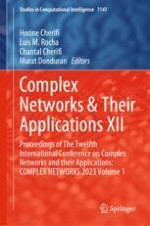This book highlights cutting-edge research in the field of network science, offering scientists, researchers, students and practitioners a unique update on the latest advances in theory and a multitude of applications. It presents the peer-reviewed proceedings of the XII International Conference on Complex Networks and their Applications (COMPLEX NETWORKS 2023). The carefully selected papers cover a wide range of theoretical topics such as network embedding and network geometry; community structure, network dynamics; diffusion, epidemics and spreading processes; machine learning and graph neural networks as well as all the main network applications, including social and political networks; networks in finance and economics; biological networks and technological networks.
